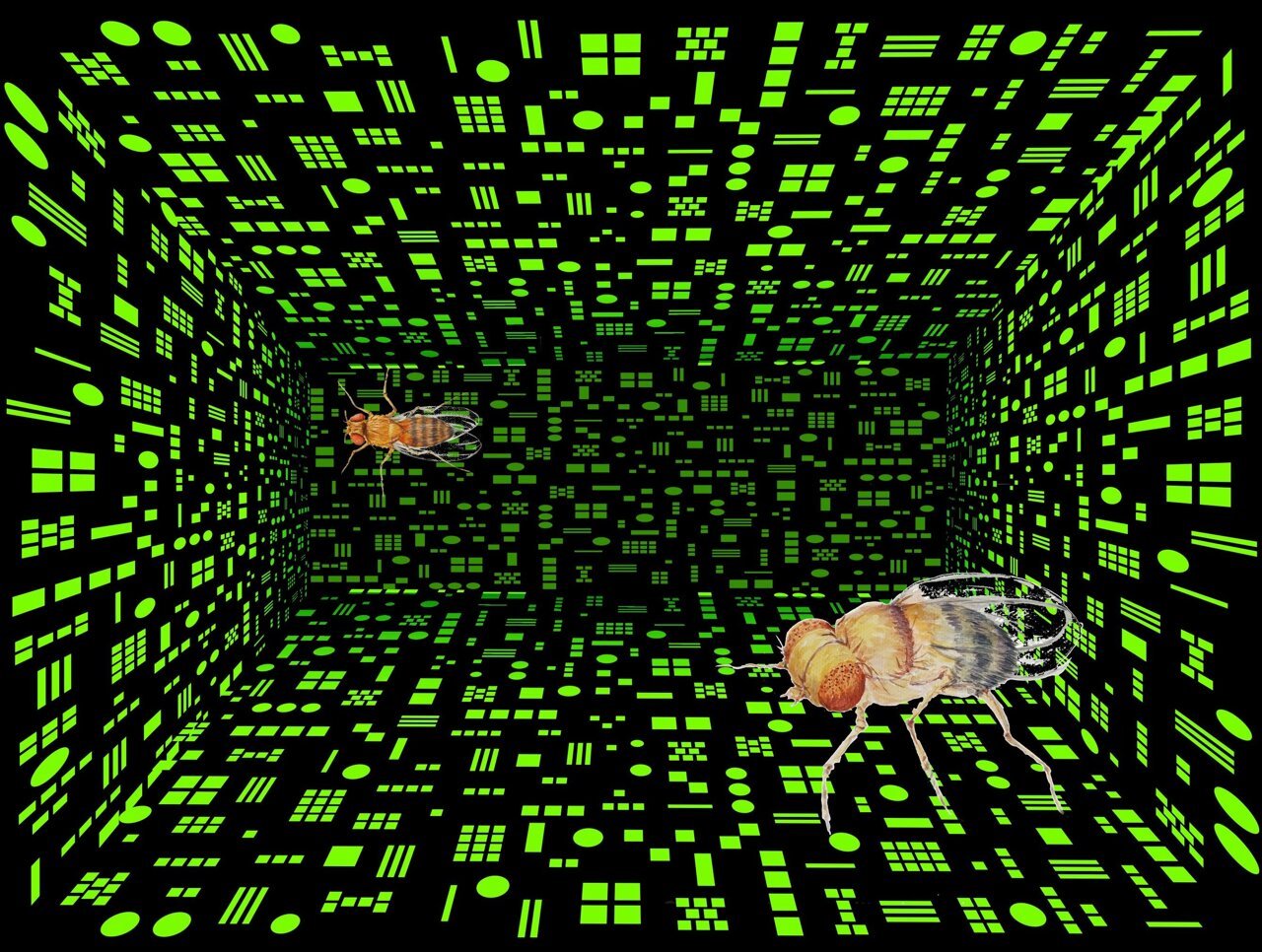Many animals possess a remarkable ability to assess quantities, whether it’s individuals in a group, twigs in a nest, or fruit on a branch. Yet, the neural mechanisms underlying this skill are still not well understood.
To address this knowledge gap, Mercedes Bengochea and her team at the Paris Brain Institute have developed a numerical cognition model using fruit flies. Their findings demonstrate that these tiny insects can distinguish between sets with different numbers of objects and even show a preference for larger quantities. This numerical judgment is reliant on specific neurons known as LC11s, located in the optic lobe, which also play a role in social interactions, helping the flies adjust their behavior in response to threats. This ability to “count” friends and foes likely played a role in the fruit flies’ evolution.
Interestingly, in the animal world, creatures do not need to learn complex numeral systems like the Indo-Arabic system we use. Instead, they constantly use numerical information from their surroundings to make important decisions. For example, animals estimate the number of competitors before engaging in conflicts, assess the amount of food in hard-to-reach places, or gauge the potential number of mates in a new territory, all crucial for their survival and reproduction. Some species, like certain ants in the desert, have even developed a remarkable level of numerical refinement, orienting themselves based on the estimated number of steps required to reach a destination.
The ability to perceive numerical information, known as numerical sensitivity, has been observed in various vertebrates and invertebrates, including primates, birds, amphibians, fish, and bees. Mercedes Bengochea, a post-doctoral researcher in Bassem Hassan’s team at the Paris Brain Institute, highlights that animals do not need to enumerate numbers explicitly to distinguish between small and large quantities.
To study the neural circuits involved in this skill, researchers must record brain activity during numerical tasks and manipulate specific neural cells to identify the involved brain regions. While these procedures are challenging in vertebrates, fruit flies offer a suitable model for investigating cognitive processes. Drosophila melanogaster, in particular, is an excellent choice for cognition studies, as these insects adjust their behavior according to the number of fellow flies present when faced with threats. Smaller groups prompt them to freeze as a safety response during imminent danger.
A lot is never too much
In their quest to understand whether fruit flies can accurately evaluate numbers and differentiate between perceived quantities, Mercedes Bengochea and her team employed a proven experimental setup called “Buridan arenas.” Within these arenas, the flies were exposed to visual stimuli consisting of two sets of objects. By observing the flies’ behavior, the researchers could determine their preferences by measuring how much time they spent inspecting each set.
The fascinating results revealed that fruit flies showed a preference for the set containing three objects over the set with only one, regardless of the objects’ sizes or the total space occupied by the sets. This preference for larger quantities persisted when the flies had to choose between sets of two or four objects and sets of two or three objects.
However, the fruit flies were unable to distinguish between sets containing three and four objects. It appears that the ratio between these two numbers is not distinct enough for them to perceive a difference. On the other hand, they easily compared a group of four objects to a group of eight objects, where the ratio was one of simple to double.
This suggests that fruit flies are not restricted to counting up to three; they can perceive numerical ratios as long as they are clear enough to distinguish.
The ability to assess the ratio between two quantities is a simple yet essential visual task that is common among animals. Humans also utilize this skill, as it enables us to quickly estimate the size of a group that is too large to be counted individually—think of a crowd at a concert, for instance.
Counting without absolute values
The specific neural circuits responsible for the fruit flies’ numerical discrimination system are yet to be fully determined. To investigate this, the researchers conducted experiments where they successively deactivated different areas of the flies’ brains, interrupting nerve signal transmission at synapses. Through these tests, they found that a group of neurons located in the optic lobe, known as LC11 neurons (lobular columnar neurons 11), played a crucial role in the flies’ ability to differentiate between different sets of objects.
In another experiment, the researchers trained the flies to go against their natural inclination for larger numbers using a conditioning method. They placed an enticing dose of sugar next to the smaller sets of objects, temporarily making the flies prefer smaller quantities. However, when they deactivated the LC11 neurons, the flies no longer exhibited any preference, whether for larger or smaller quantities. This confirmed the essential role of LC11 neurons in comparing quantities, regardless of the numerical value assigned by the fruit flies.
Notably, LC11 neurons are also involved in the social behavior of the fruit flies, activating when insects need to adapt their defensive strategies based on the number of nearby peers. This ability to assess quantities likely played a pivotal role in the evolution of invertebrates. Insects utilize simple cognitive solutions for numerical tasks, and computational models have shown that just a few artificial neurons are sufficient for such tasks.
While fruit flies may not assist us with accounting, it’s important not to underestimate their cognitive abilities and the intricacy of their social behavior. Underestimating them would be regrettable because they offer valuable insights into our understanding of the human brain. Insects, including fruit flies, provide essential models for studying neural processes and behaviors, contributing to advancements in neuroscience.
Source: Paris Brain Institute

